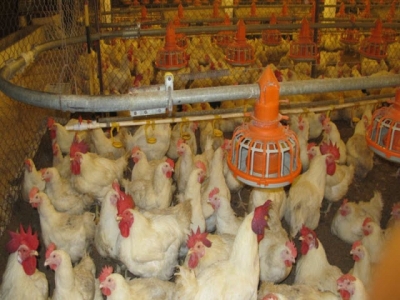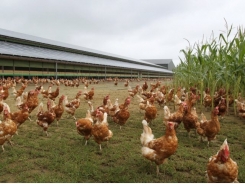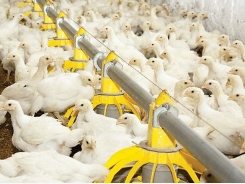Beware of cold temperatures affecting feed intake and layer performance

ABN nutrition experts suggest feed programs may need to be revised
With cold weather conditions threatening to inhibit the ability of free range hens to self-regulate their body temperature, nutritional experts at ABN warn that feed programs may need to be revised to take into consideration the hen's additional energy requirement in winter.
Within the hen's thermoneutral zone - approximately 20C to 25C, which can vary depending on several factors such as bodyweight - hens are able to maintain a constant body temperature with the help of physical heat regulation, comments Lucy Gallant, ABNs' poultry technical specialist.
"The energy required by the hen for maintenance is provided in the feed and in colder temperatures, the hen will need to find extra energy to stay warm by dipping into the energy from their feed that's needed for production, which can cause feed intake to rise," said Gallant.
Gallant warns that in colder weather feed intake per hen can go up by as much as 1.0 to 1.1 grams per degree Celsius change in temperature, which has associated cost implications. "And this comes with no added returns or improvements in performance; just a bigger feed bill," Gallant said.
The energy within the hens' diet is used across a variety of activities, encompassing maintenance and the hens' ability to regulate their temperature, and other key factors, such as growth and egg production.
Gallant notes that when something challenges this status quo such as a drop in temperature, the birds' natural reaction is to prioritise for maintenance and reduce the amount of energy going into growth and egg production.
"This is why it is so important farmers work with their advisors to ensure birds are fed the correct specification ration," she said. "By feeding the right spec ration to suit the hens' energy requirements, any drop in performance can be avoided.
"It's important to consider the time of year and at what stage in the flocks' production cycle they are at when selecting a ration."
John Round, ABN's poultry nutritionist notes that a comprehensive range of layer rations are supplied by ABN with this in mind to be able to suit birds at all stages of lay.
"There are six different specifications varying from the top spec ration, down to the base ration. As the specification of the rations increases so too do the protein and energy levels," he said
The rations are designed to have optimum levels of digestible amino acids, such as digestible methionine, which is a key amino acid in layer feed. High levels of metabolizable energy are also included, with the aim of supporting a high level of egg production with low feed intake and high feed efficiency.
"Across the range of layer rations these vital components are the variables that determine the nutrient specifications of the diets," he concluded.
Gallant goes on to add why it is also essential to consider the life of the flock. "In early lay, high feed energy levels are vital to ensure peak productivity is reached as the flock is coming into production whilst also continuing to grow.
"This is a demanding time and if colder temperatures are also causing a drain on energy levels, it is more important than ever to ensure the birds are being fed the correct ration to meet their requirements," she said.
Monitoring the hens' performance and the bigger production picture is central to successful management, she advised. "Farmers should be regularly recording and monitoring performance indicators such as egg production, egg weight, liveability, bird uniformity, body weight and feed intake.
"A weekly analysis of these indicators will enable benchmarking, and thus help farmers and their technical advisors determine the correct ration specification needed to meet their requirements at any particular time in the production cycle," she added. "We have access to a range of tools and services to enable us to help our customers monitor and analyze hen performance and financial returns."
Gallant concluded that if the basics are done well, it will go a long way towards managing free range layers performance, even during periods of cold weather when there is an increased strain on the energy provided through the feed. "High energy diets should be considered to counteract this effect."
Related news
Tools

Phối trộn thức ăn chăn nuôi

Pha dung dịch thủy canh

Định mức cho tôm ăn

Phối trộn phân bón NPK

Xác định tỷ lệ tôm sống

Chuyển đổi đơn vị phân bón

Xác định công suất sục khí

Chuyển đổi đơn vị tôm

Tính diện tích nhà kính

Tính thể tích ao




 Advances in nutrition
Advances in nutrition  Inclusion of DDGS
in poultry diets
Inclusion of DDGS
in poultry diets